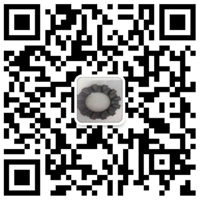- Electric motor drives account for 60–70% of global industrial electricity consumption. Pump systems alone represent about 25% of all the electricity consumed by industrial electric motors, and account for roughly 18% of electricity used within the chemical industry[Read more]
- Soft magnetic composites (SMC) are being developed to provide materials with competitive magnetic properties (good relative permeability and magnetic saturation) but with high electrical resistivity.[Read more]
- The soft magnetic materials traditionally used in AC applications are steel laminations. Now there are also iron-based powders specifically engineered for magnetic applications in alternating fields called soft magnetic composites or SMC.[Read more]
- The SMC-based motors operate at low speeds with high power outputs. Their production costs are expected to be low, and they are aimed at general-purpose applications such as swimming pool pumps.[Read more]
- Australian researchers have used novel magnetic materials to design and build small motors with energy efficiency of up to 90%, compared to 60-70% for conventional designs. The new motors are also smaller in size for a given power output.[Read more]
- Electric motors are chiefly secondhand in for the most part kinds of applications. For example, roughly 45% of the world’s rapid energy is used by motors by all of pump applications representing 20% of consumption. However, the biggest express is by the whole of smaller rapid motor-based products (100W – 5kW) as they offer as a matter of fact low together system efficiency.[Read more]
- Neodymium Manufacturing Processes:There are two approaches to produce neodymium magnets. The in the first place, and most normal, is a sintering process that makes more grounded magnets.[Read more]
- Magnets do the following things: Attract specific materials –, for example, iron, nickel, cobalt, certain steels and different compounds; Apply an appealing or shocking power on other magnets (opposite poles attract, like poles repel);
Affect electrical conductors when the magnet and transmitter are moving in connection to one another;[Read more]
- Neodymium Iron Boron is a composite made primarily from a blend of Neodymium, Iron, Boron, Cobalt and shifting levels of Dysprosium and Praseodymium.[Read more]
- Neodymium Iron Boron is a composite made primarily from a blend of Neodymium, Iron, Boron, Cobalt and shifting levels of Dysprosium and Praseodymium.[Read more]




 Copyright © 2016 Shenzhen City Ri Shengchang Magnet Technology Co., Ltd All Rights Reserved.
Copyright © 2016 Shenzhen City Ri Shengchang Magnet Technology Co., Ltd All Rights Reserved.